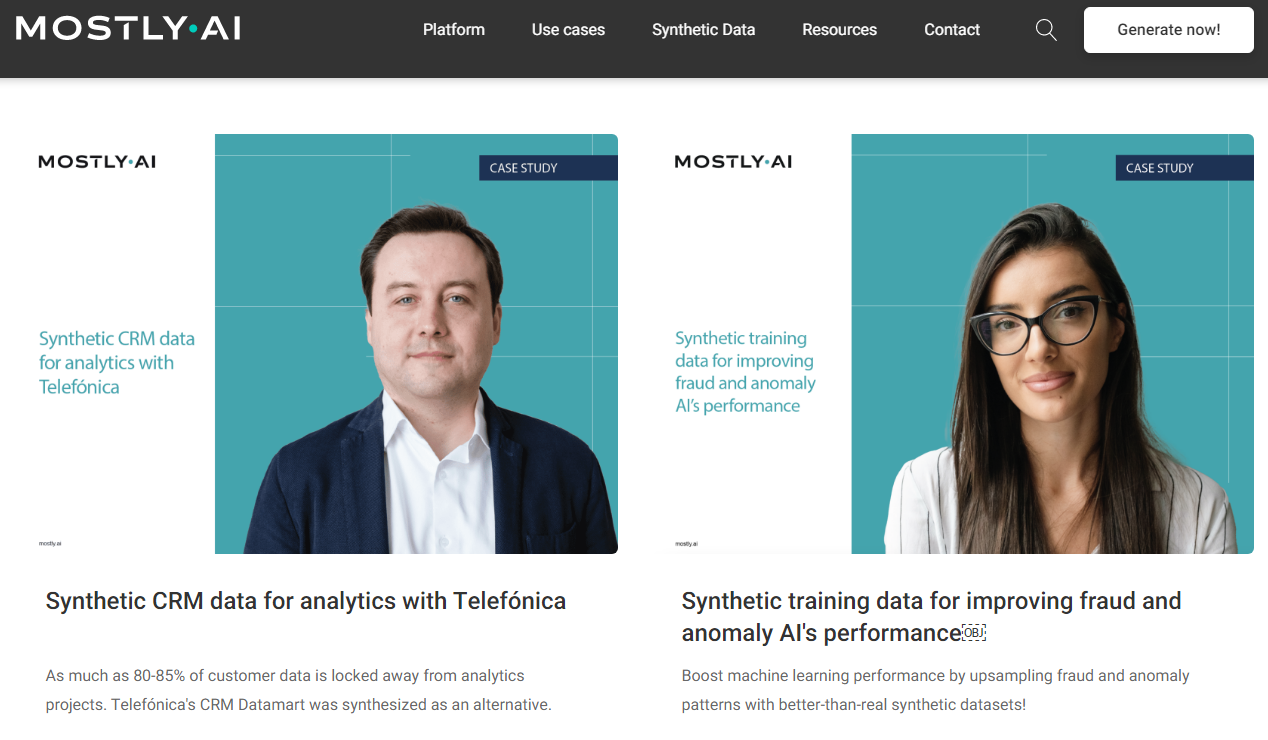Business storytelling is essential to both your customers and your employees.
Stories are a powerful way of communicating, as they engage our emotions and help us connect with others in a relatable way. Stories are easy to remember and allow us to digest and understand complex topics.
When you tell stories, you can make sense of your experiences in a way that gives meaning to you, your team, and the people you serve. Storytelling can be inspirational, too—it’s one of the main reasons some of the best motivational speakers use them in their speeches to captivate their audience and drive change.
Sharing a story about an employee who went above and beyond or telling a story about how your product changed someone’s life makes the internal audience feel good about what they do. In contrast, the external audience sees how much you care about those who buy from you.
This post shares eight tips for using business storytelling to connect with customers and employees to strengthen your brand.
1. Tell the story from the point of view of your customers and focus on their pain points.
To tell a robust story that resonates with your clients, you must understand what makes them tick. This means understanding the needs, objectives, and challenges of your customers. What are their goals? How can you help them achieve those goals? What is their decision process?
Most importantly, you need to know what business problems they face. Once you understand those problems and learn how to solve them, you can craft a compelling story around solving them.

For example, nobody enjoys paying an arm and a leg for flights when booking a vacation or traveling for business.
Scott’s Cheap Flights comes into play with one main goal: never overpay for flights again. Their entire business storytelling is based on this motive.
By creating content like this guide covering the cheapest flights to anywhere and how to find them, they are connecting with their audience to help them solve the most critical problem when it comes to traveling.
With business storytelling, you need to understand your audience’s problems and show empathy for their position. When they decide to make a purchase, they trust you with their hard-earned cash because you know what they’re going through and want to help them solve it.
2. Explain what customers will miss out on by not working with you.
In addition to the benefits of using your product, it’s essential to explain what the reader risks by not working with you.
By addressing both the risk and reward of a situation, you’re presenting an honest picture of how your product or service can impact their life. This tactic makes for a more compelling story than one focused solely on the positives of your product or service.
There are several ways to go about this:
- Scenario/consequence: If they don’t use your solution, then X will happen (where X is something negative). For example, in a “how-to secure a website” guide, you can use this approach when describing what happens if someone doesn’t take action and their site becomes compromised. Since the reader didn’t take the time to secure their website, now they have to pay an expensive security expert to fix the damage.
- Comparison: Use explicit comparisons between your product and competitor products that show why yours is superior—and why they should choose yours over those other products. In this guide by Young and the Invested, they outline the top debit card for kids by assigning a rating based on features, fees, and current promotional offers across all options on the market. Copper Banking takes the top spot with 4.8 starts supported by a free card, no additional fees, and the ability for teens to gain more financial independence compared to the other options.

3. Craft a proper narrative arc.
A good story has a clear beginning, middle, and end. It’s no different for your business.
Before you start telling your story, you need to understand it. The best way to do that is by defining the problem before starting on solutions and setting goals before mapping out how you’ll achieve those goals. Think of your business as the hero in a story; it will go through a series of challenges (the middle) before emerging victorious (the end).
Here are some suggestions:
- Define the problem: What frustrations are you looking to solve? What issues are getting in the way of your customers’ happiness? Ask yourself these questions to determine what solutions should be built into your product or service and how they will help solve those problems. These answers will form the foundation for telling your brand’s story.
- Set goals: Once you know what issues need to be solved, decide what kind of impact those solutions will have on your business or industry as a whole — this is where goal-setting comes in. Founders and CEOs alike need to understand their own goals, but they also need to articulate them clearly, so everyone else understands.
4. Be authentic and transparent.
Always aim to be genuine with your audience. The more truthful and authentic you are, the better the audience will perceive it. There’s no point in fooling anyone, especially if your story is not valid.
In addition to being authentic and transparent with your audience, you need to tell your story from the heart. If you are emotionally invested in telling a story, this will show through when you deliver it. If you don’t care about what you are saying, neither will anyone else.
Put yourself in your audience’s shoes and think about what they may want from a good business story that is both entertaining and informative. Whatever topic or theme you choose for your story must align with who they are as people or how they identify themselves as consumers; otherwise, it won’t resonate, and audiences will quickly lose interest.
5. Make it relatable.
Keep your audience in mind and write for them when telling a story. If your audience consists of elementary school teachers, don’t mention the importance of supply-chain management in your example. If you’re addressing a group of business analysts, don’t use samples or stories that only an English Literature teacher would understand.
You should also be aware of the potential biases and prejudices in sharing an example with your audience. For instance, if you’re giving a presentation to a group of senior citizens on using social media to connect with family members, it wouldn’t make sense to use Snapchat as an example. The same goes for using Twitter when talking to people who aren’t well-versed in social media jargon and don’t understand what “tweeting” means.
However, this doesn’t mean that you need to completely change the way you speak or write either—that can reduce the authenticity of your message and make it even harder for people to relate to what you’re saying. Instead, think about ways to better connect with your audience without alienating others or sounding too impersonal.
6. Use visuals to increase engagement.
Storytelling is the most effective way to get people emotionally invested in your product or service. When starting with storytelling, it’s essential to understand that different people have different expectations about the experience.
Photos and videos can tell stories in a more engaging way than most text forms. Visuals allow people to feel like they are right there with you, experiencing your story in real-time.
You can capture your reader’s attention and tell a better story than plain old text by adding photo effects to your images. A picture is a great way to convey your message quickly to an audience without the need to read through a lot of text.
Think back on when you felt bored by an article and then suddenly found yourself completely mesmerized by an accompanying picture or infographic; that is the power of visual storytelling.
Videos are arguably even more captivating than images. For example, eToro is an investing platform whose goal is to encourage social investing. The home page of their website opens to a blockbuster movie-level video that explains the concept of social investing in a comprehensive and engaging way.

Video allows brands to break down highly complex topics into a fun, engaging, and digestible video to share their story. And here’s another benefit: since visual content is much easier for people to share on social media (it’s already built-in with Facebook and Twitter), your brand could reach even more potential customers.
7. Testimonials are one of the most compelling storytelling tools used in sales presentations, marketing campaigns, and email marketing.
A testimonial can be a powerful business storytelling tool because it is direct and specific. People will believe a customer’s story more than your company’s claims that its product is excellent, so use that to your advantage.
Testimonials are perfect in sales presentations, and for a good reason. Having a satisfied customer sing your praises can go a long way toward closing the deal. But you shouldn’t limit their use to sales pitches. You can also include them in emails or other marketing materials to show potential customers what they have to gain by buying your product or service.

Fivetran does an excellent job adding testimonials to their page about building a modern data stack. By leveraging customer feedback, they share the success stories of current customers to build trust with their audience.
People are more likely to purchase if they are confident that others have already experienced success with a product or service. Even if someone isn’t ready to make the purchase yet, reading about other people’s positive experiences with you may convince them that they should at least stick around long enough to hear what you have to say.
8. Document customer success stories and share them across the company.
This is a lesson that many companies are learning and one that you need to take to heart. By documenting customer stories as part of your customer success process, you can understand how customers use your product and create a powerful tool for motivating employees. Take MOSTLY AI as an example, they share their customers’ success stories in the form of case studies and explain how their solutions for synthetic data generation helped their clients succeed in different industries, from telecommunications to HR, and more.

To create customer success stories, here’s what you can do:
- Keep track of client feedback using a CRM platform.
- Ensure salespeople share what they hear from prospective clients in the sales pipeline.
- Encourage customer success teams to keep records of positive messages from existing customers.
- Collect case studies when an employee uses another team’s product to improve productivity.
Once you have collected a database of success stories, it is crucial to circulate the feedback with your employees to keep them motivated and provide concrete examples that their hard work is not going unnoticed. This small gesture is important for improving employee morale.
Key Takeaways
Stories have power. But you need to know how to tell them right.
In a noisy world, stories are the best way to create an emotional connection with your audience. They put your message in context and give it meaning. Using storytelling techniques will help you connect deeper with your audience beyond surface-level data points and facts.
With stories, you can engage, entertain, and educate your audience about what’s happening in the world around them.
About The Author
Vikas Kalwani is a product-led growth marketer and B2B Marketing Specialist skilled in SEO, Content Marketing, and Social Media Marketing. He manages partnerships at uSERP and is a mentor at 500 Global and Techstars.


